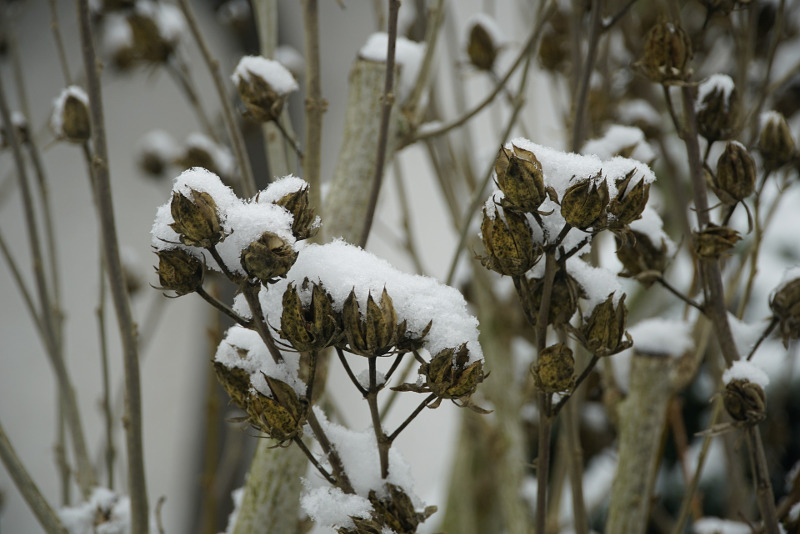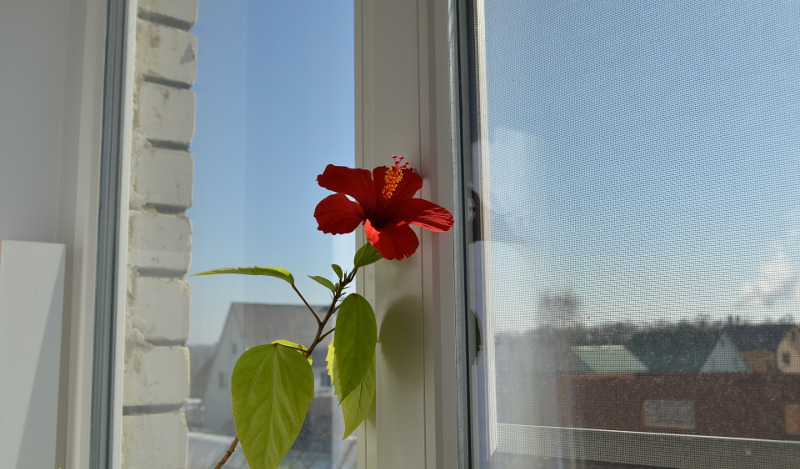Even if you are unfamiliar with Hibiscus by name, you have likely seen the large, tropical-looking flowers that cover this perennial shrub during the summer. The hardy variety can grow in USDA zones 4 through 8 if you provide proper winter care.
The tropical type will thrive all year long in growing zones 9 through 11, although the tropical variety may be grown as an annual in colder areas or grown in a container and brought inside for the winter.
Hardy Hibiscus plants should be covered in winter when grown in areas with cold temperatures and snow. Pack mulch around the base of the plant to help protect the roots. The plant can be wrapped in fabric or a tarp to ward off chilly temps and wind. In areas of high snowfall, or if the Hibiscus is in a place where snow could slide off a roof and crush the plant, use a study structure to cover young plants.

Cutting Back Hibiscus For Winter
It is generally best to wait until spring to prune Hibiscus plants. Leave any overgrown branches or dead growth in place, as this will help insulate and protect the plant from the winter chill.
Hibiscus Winter Care in Pots
Hibiscus grown in planters generally need to be brought into a protected and warm area during the winter. If the Hibiscus is actively growing, find a warm, sunny, and humid spot to place the plant. If your potted Hibiscus is dormant, it still needs to be protected against the winter chill, but it will be fine as long as it is kept in an area where the temperature is at least 50-degrees.
Watering Hibiscus in Winter
Hardy Hibiscus kept outside during the winter will not need any water. Tropical Hibiscus planted in the ground, or potted Hibiscus brought inside will need water if the plant actively grows or pushes out new leaves and blooms. Dormant plants do not need as much water and may only need to be watered once a week or when the soil is dry.
Growing Hibiscus Indoors
Moving a plant indoors after spending the summer outdoors can be stressful for the Hibiscus. To ease the transition, place the Hibiscus in a South-facing window that receives lots of bright light.
Hibiscus need increased humidity, so if your home has average or low humidity, you may want to use a humidifier or a pebble tray with water to increase the dampness and help the plant acclimate. The plant may drop some leaves despite your best efforts - this is normal, so don’t be alarmed and just give the Hibiscus time to settle in.
Hibiscus may experience a dormancy period during the winter. If your Hibiscus goes dormant, it will not need as much water, so wait until the soil is mostly dry before water. When you do water, drench the soil and remove any excess water that flows through the container.

Steps To Care For Hibiscus in Winter
Hibiscus plants need to be protected from the elements in areas that experience cold winters. Hibiscus can survive outdoors in warmer regions, and potted plants will generally need to be brought inside for the winter.
Step 1 - Pack mulch around the base of hardy Hibiscus and wrap in fabric or place a cover over the plant.
Step 2 -Tropical Hibiscus usually do not require winter care but be ready to cover the plant if the forecast calls for an unseasonable cold snap.
Step 3 - Potted Hibiscus should be brought indoors and placed in a sunny, warm, and humid spot for the winter.
 |
Author Alison Cotsonas - Published 12-14-2021 |
